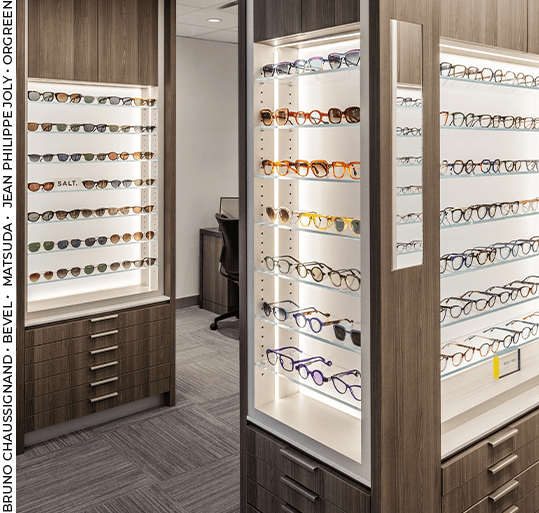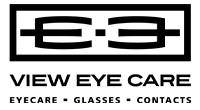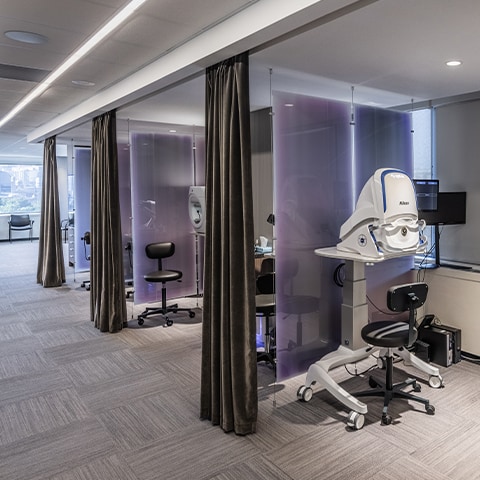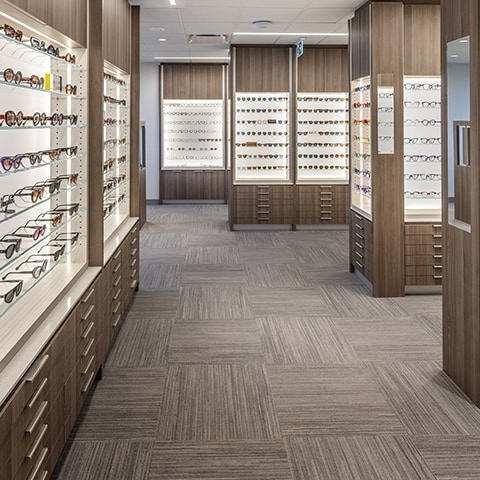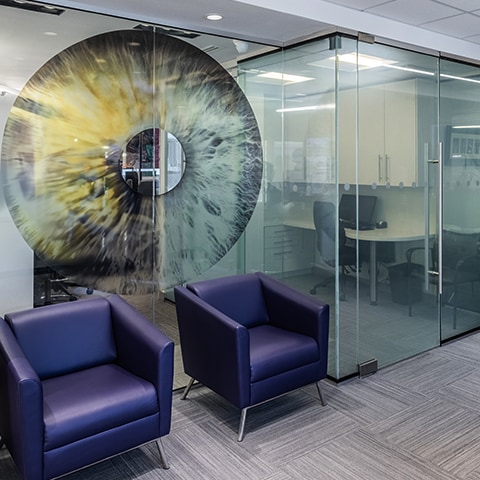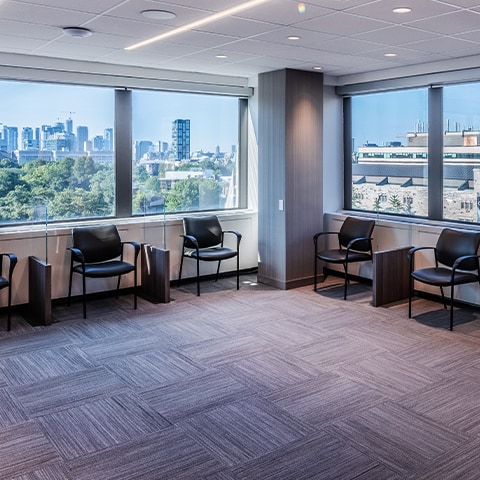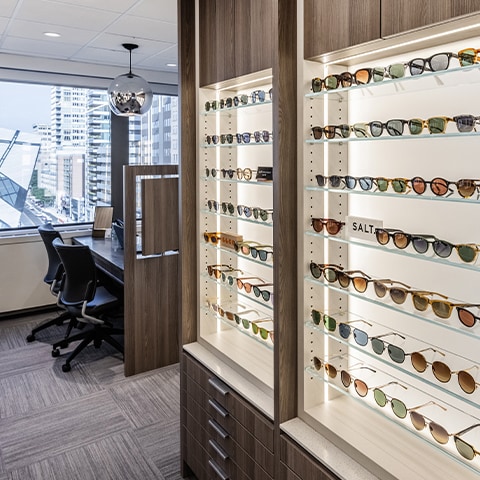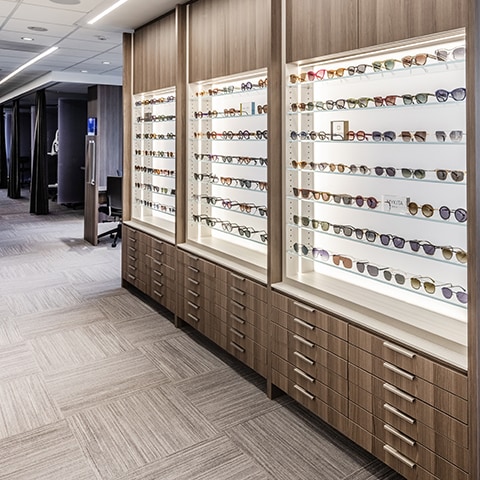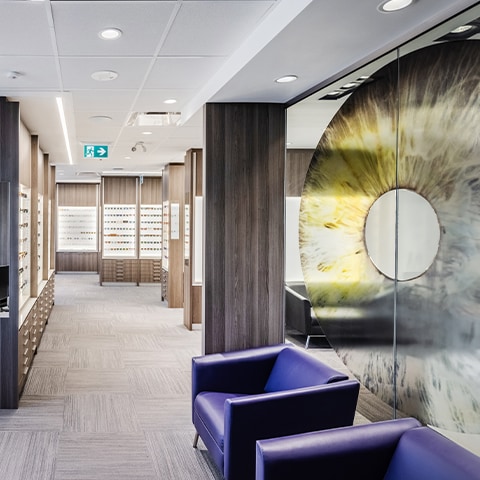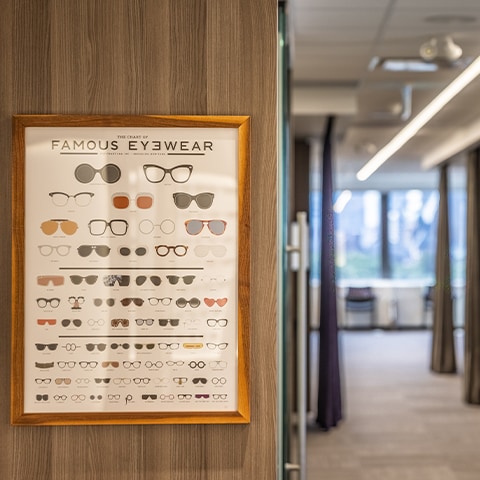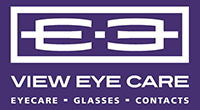Screen-Based Strain
What does your technology do for you? Today, we can order dinner, buy concert tickets, chat with friends, play games, and even work, all from virtually any device with a screen. Smartphones, gaming consoles, computers, and tablets make our lives more convenient.
But, there are some drawbacks to increased screen time. It’s almost impossible to get away from our devices, and as a result, many Canadians suffer from discomfort related to digital eye strain.
Digital eye strain is also known as computer vision syndrome. It refers to a group of ocular issues stemming from too much time spent using digital devices.
If you’re experiencing eye discomfort after staring at your screen, we can help. We’ll assess your screen habits and provide some strategies to mitigate your discomfort.
Book an appointment to find relief from digital eye strain today.
Book Appointment
Symptoms of Digital Eye Strain
There are a few common symptoms associated with digital eye strain, including:
- Dry eyes
- Headaches
- Eye strain
- Blurry vision
- Neck and shoulder pain
Your symptoms may often alleviate when you take a solid screen time break. But, discomfort will return once you’re in front of a digital device again. In order to find relief in the long term, you’ll need to implement some mitigation strategies.
It’s also important to visit your optometrist to ensure there is not a more serious, underlying condition.
Mitigation Strategies
Adjusting your work area, taking intentional screen breaks, and ensuring you have sufficient lighting while using your digital device are all strategies that help reduce digital eye strain.
Ergonomics
Office ergonomics and proper posture can help to keep you comfortable while using digital devices. While you’re at your desk, be sure to sit upright with your feet flat on the floor. Your shoulders should not be rounded or hunched, and your neck should align with your torso. Your knees and elbows should be at 90 degree angles with your feet on the floor or a foot-rest and palms on your desk or wrist support pad.
With your head upright, the top frame of your monitor should be at eye level, causing your eyes to look slightly downwards to see the centre of the monitor. The monitor should be tilted about 5 degrees upward, meaning the top is pushed away and bottom is pulled in towards you.
Settings
If you’re reading on your digital device, increase the font size to minimize squinting. Contrast and colour tones should also be set to maximize your comfort.
Lighting Levels
Adjusting light levels in the room around you and on your device can help manage digital eye strain.
Turn down your screen’s brightness to match the lighting levels of your surroundings. If the light from the room or windows is reflected in your screen, the glare can also contribute to eye strain.
Anti-glare screens are available for your device’s display, and glasses with an anti-reflective coating can help.
The 20-20-20 Rule
When you’re concentrating on your work, it might be challenging to take a break, but following the 20-20-20 rule can help to relax your eyes. Every 20 minutes, look at something 20 feet away for 20 seconds. This helps give your eyes a chance to refocus, reducing strain.
Keeping an Eye on Children’s Screen Time
Adults use screens frequently, but they’re creeping into kids’ lives too. Studies show that the risk of children developing visual issues increases after 2–4 hours of screen time.
Increased device use also means kids are spending more time indoors. Studies have shown that lack of outdoor play is a risk factor in the development of myopia.
The Canadian Association of Optometrists recommends that children avoid screen time 1 hour before bedtime and never bring a screen into their bedrooms. Breaks should be frequently encouraged when kids are using screens, particularly outdoor breaks for whole-body physical activity.
In addition to visual issues, too much screen time also puts children at risk for a variety of health issues, including:
- Cognitive delays
- Riskier behaviours in older children
- Delays in social skill development
- Higher risk of obesity
- Poor sleep quality
- Delayed social development
Children should have regular, comprehensive eye exams to help preserve their visual health, regardless of their screen time.
Book their appointment today!
Book AppointmentOur Location
We are located in Toronto’s Yorkville neighbourhood in the second building just east of Avenue Road. Look for the “151” sign on the building right above the doors, which may be easier to see from the North side of the street. The building’s “151” sign can be hard to spot from the south side—look directly across from Tiffany & Co.

Parking
Colonnade Garage (Currently under construction – parking here is very limited!):
Located on the south side of Bloor between Avenue Rd. and Bay St.
- Height limit: 5’8”
- Entrances:
- Off Bloor (west of St. Thomas St., before the crosswalk)
- Via St. Thomas St. → right on Sultan St. → garage entrance at end
Directions
- Driving west on Bloor: After Bay St., turn left on St. Thomas, right on Sultan.
- Driving east on Bloor: After passing our office, turn right on St. Thomas, right on Sultan.
- Missing the turn adds a long detour!
- Video directions for parking

Notes
- License plates are scanned—pay at exit.
- Lot fills quickly; allow extra time.
- After parking, exit onto Bloor via the Colonnade; our building is a short walk west (turn left).
- Alternate parking:
- Manulife Centre, 44 Charles St. W (7-min walk)
- Yorkville Village, 55 Avenue Rd (5-min walk)
- No validation available through our office.
TTC Directions
Our office is within walking distance of Bay, St. George, and Museum stations.
- From Bay Station (Bloor Line): Video Directions
Exit Bay St., walk south to Bloor, then west toward Avenue Rd. Cross to the south side; entrance is a few doors east of Avenue Rd. - From Museum Station (Yonge-University Line): Video Directions
Walk north on Queen’s Park/Avenue Rd., turn right on Bloor (east). Our entrance is a few storefronts in. - From St. George Station (Yonge-University Line):
Exit to Bedford Rd., walk south to Bloor, turn left (east), cross to the south side, and continue past the ROM.

*We are closed on statutory holidays.
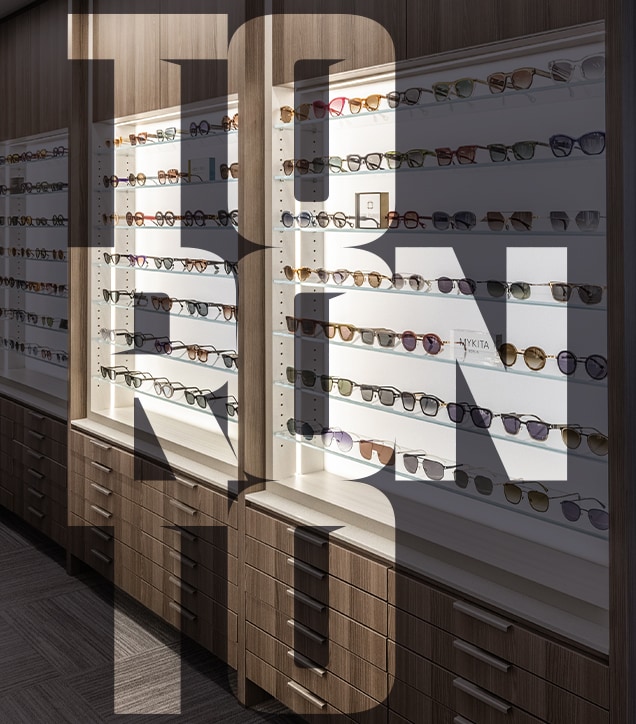
Our Address
- 151 Bloor St W, Suite 703
- Toronto, ON M5S 1S4
Contact Information
- Phone: 416-923-8439
- Email: appointments@vieweyecare.com
Hours of Operation
- Monday: 8:00 AM – 6:00 PM
- Tuesday: 8:00 AM – 6:00 PM
- Wednesday: 8:00 AM – 6:00 PM
- Thursday: 8:00 AM – 6:00 PM
- Friday: 8:00 AM – 4:00 PM
- Saturday: Closed
- Sunday: Closed
Our Services
Our Brands
